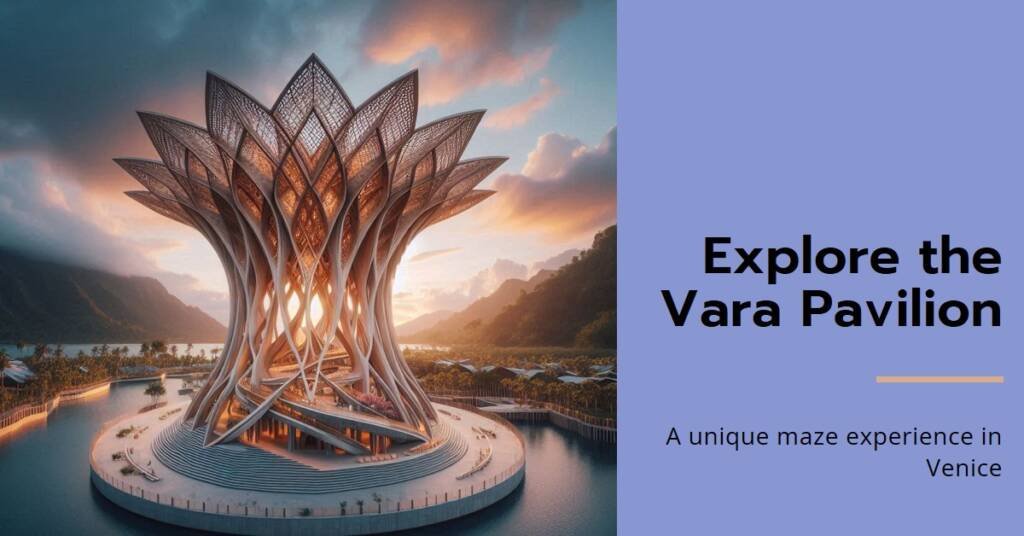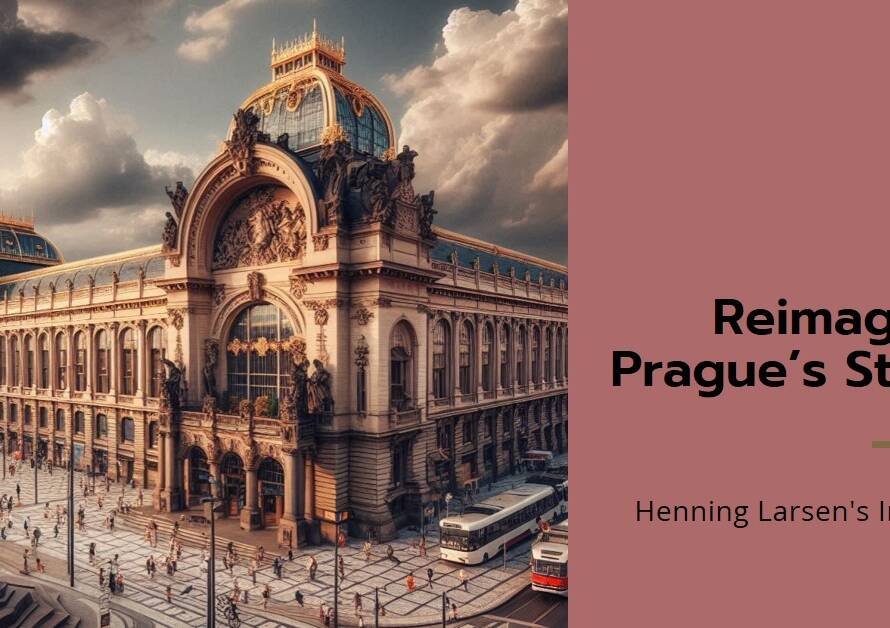
Table of Contents
- Introduction to the Vara Pavilion
- Architectural Inspiration and Concept
- Design Features of the Pavilion
- The Maze Experience: Navigating the Pavilion
- Cultural Context and Influence
- Sustainability and Material Choices
- Critical Reception and Architectural Discourse
- Future Implications for Architecture
- Conclusion: The Legacy of the Vara Pavilion
Introduction to the Vara Pavilion
The Vara Pavilion, conceived by the renowned architect Pezo Von Ellrichshausen, emerges as a distinctive architectural creation situated in the cultural tapestry of Venice. This captivating structure is not merely an addition to the urban landscape but a thoughtful response to its unique environment, embodying an intersection of artistic expression and functional design. The pavilion’s purpose transcends conventional architecture; it serves as a space for contemplation, reflection, and interaction within one of the world’s most storied cities.
Architectural philosophy plays a vital role in the concept behind the Vara Pavilion. Pezo Von Ellrichshausen emphasizes an approach that harmonizes with the surrounding environment while challenging traditional notions of space and structure. This pavilion is characterized by its concentric arrangement, fostering connections between the interior and exterior. The design incorporates natural materials and forms that resonate with Venice’s rich history and its labyrinth-like waterways. By doing so, the pavilion stands as a testament to modern architectural innovation while respecting the historical context that defines Venice.
The significance of the Vara Pavilion extends beyond its physical presence. It contributes to contemporary architecture by exploring themes of perception and spatial organization. It invites visitors to navigate through its engaging layout, which acts as a compass guiding one’s journey through the complexities of urban interactions. In the broader context, the pavilion symbolizes a bridge between traditional Venetian architectural elements and the experimental nature of modern design.
As such, it plays a pivotal role in fostering dialogue within the architectural community and among visitors, illustrating how contemporary spaces can cultivate a deeper understanding of cultural heritage. Ultimately, the Vara Pavilion serves as an exemplar of how innovative design can enrich the urban experience in a city renowned for its artistic legacy.
Architectural Inspiration and Concept
The Vara Pavilion, designed by the esteemed architect Pezo Von Ellrichshausen, is a significant addition to the architectural landscape of Venice, the city renowned for its intricate interplay of light and space. The design of the pavilion draws heavily from various artistic and architectural movements, reflecting a deep engagement with both historical and contemporary influences. One of the primary inspirations behind the pavilion is the notion of a labyrinthine form that encourages exploration and interaction. This concept resonates with the unique character of Venice, where narrow alleyways and quaint squares create a natural sense of discovery.
Integrating both structure and nature, the Vara Pavilion captures the essence of its Venetian surroundings. Its concentric layout is not merely an aesthetic choice; it is a functional design strategy that promotes a dialogue between the interior and exterior environments. This interaction between space and light is a recurring theme in Von Ellrichshausen’s work, showcasing how natural light can be choreographed to enhance the experience of the user. By creating a multi-layered structure, the architect deliberately plays with the idea of visibility and concealment, allowing visitors to engage with the pavilion in diverse ways.
Furthermore, the materials chosen for the construction of the Vara Pavilion—primarily wood and glass—are reflective of the historical architecture of Venice. The use of local materials not only roots the pavilion in its geographical context but also reinforces the connection to the city’s storied past. The thoughtful detailing and craftsmanship that characterize the pavilion echo the rich artisanal traditions found throughout Venice. Overall, the architectural concept behind the Vara Pavilion is a harmonious blend of history, environment, and the notion of spatial exploration, culminating in a unique experience that invites reflection and engagement.
Design Features of the Pavilion
The Vara Pavilion, designed by Pezo Von Ellrichshausen, stands as a testament to innovative architectural design within the unique context of Venice. Its concentric maze-like structure not only captures attention but also serves functional purposes. The pavilion’s layout consists of gently flowing curves and circular forms that create a harmonious spatial experience for visitors. Every element is thoughtfully arranged to resonate with natural light and the surrounding environment, marrying aesthetics with usability.
One of the key materials used in the construction of the Vara Pavilion is locally sourced concrete, which contributes to the building’s durability while providing an organic aesthetic that complements its setting. The use of different finishes and textures adds depth to the structure; smooth surfaces contrast with rougher finishes, creating a tactile experience that encourages exploration. Glazing is strategically employed to introduce transparency, allowing the inviting scenery of Venice to become an integral part of the pavilion’s architectural narrative.
From a structural perspective, the pavilion relies heavily on understated yet effective techniques to ensure stability without compromising beauty. The concentric circles not only define the layout but also serve to distribute weight evenly, thus enhancing the integrity of the building. The architectural design incorporates geometric principles that facilitate fluid movement throughout the space. This results in an experience that feels both organized and organic, as visitors navigate the intertwining paths and discover various vantage points, encouraging moments of reflection amid the bustling city.
Ultimately, the design features of the Vara Pavilion embody a thoughtful balance between artistry and engineering, presenting a space that is both visually striking and functionally adept. Its innovative approach serves as a noteworthy example of how contemporary architecture can interact with and enhance the historical fabric of a city like Venice.
The Maze Experience: Navigating the Pavilion
The Vara Pavilion, designed by Pezo Von Ellrichshausen, offers an exceptional navigational experience that captivates visitors from the moment they enter. The pavilion’s concentric design creates a unique labyrinthine environment that encourages exploration and fosters a sense of discovery. As visitors traverse through its various layers, they are invited to engage not only with the architecture but also with the surrounding landscape of Venice.
At first glance, the structure presents an intricate arrangement of walls and open spaces, prompting individuals to immerse themselves in the maze-like pathway. The carefully orchestrated flow of movement is intentional, guiding each visitor on a personal journey through the pavilion. This design allows for moments of solitude and reflection, as one meanders through the different sections. The experience of navigating the Vara Pavilion is both tactile and visual, as sunlight filters through strategically placed openings in the walls, creating dynamic shadows and illuminating the varied textures of materials used throughout.
Each turn and corner within the maze reveals new perspectives, establishing an ongoing dialogue between the visitor and the architectural elements. This encourages a level of interaction that transcends traditional viewing; guests are actively involved in the process, prompting them to reconsider their surroundings. The sense of intimacy that arises from the layout enhances the emotional connection to the space, while also fostering a communal atmosphere as visitors share their experiences within the shared environment.
In conclusion, navigating through the Vara Pavilion is a multi-sensory experience that intertwines exploration and architectural appreciation, allowing visitors to forge a deeper relationship with the space while engaging with Pezo Von Ellrichshausen’s distinctive architectural vision. The oval corridors and strategic openings invite curiosity, making each journey an opportunity for personal and collective reflection.
Cultural Context and Influence
The Vara Pavilion, designed by Pezo Von Ellrichshausen, emerges as a striking architectural piece within the renowned cultural tapestry of Venice. This historical city, celebrated for its intricate waterways and rich artistic heritage, serves as an ideal backdrop for the pavilion’s innovative design. Venice, a city where every structure narrates stories of its past, significantly influences the architectural dialogue between historical and contemporary practices. The city’s unique blend of Gothic, Byzantine, and Renaissance influences can be traced in its urban layout, which combines the old with the new in a seamless manner.
Situated in a landscape imbued with centuries of artistic endeavor, the Vara Pavilion seeks to establish a conversation with its surroundings. Its concentric maze-like structure reflects not only the architectural trends of Venice but also the city’s overarching ethos of exploration and experimentation. In this way, the pavilion acts as a modern counterpart to Venice’s traditional architectural forms, offering a fresh perspective while still paying homage to the city’s storied past. The interplay between the pavilion and its urban context highlights the transition from historical narratives to current architectural explorations, encapsulating an ongoing evolution within Venice’s built environment.
Moreover, the pavilion’s design is characterized by the thoughtful integration of natural elements, echoing the Venetian appreciation for the interplay between architecture and nature. The use of materials that resonate with the surrounding environment further reinforces the structure’s connection to Venice’s historical context. Through its form and presence, the Vara Pavilion stands not only as a testament to the ingenuity of contemporary architecture but also as a homage to the cultural legacy that Venice has nurtured over the centuries. Such a dynamic relationship between the pavilion and its context illustrates just how profound the influence of the city’s cultural heritage is on modern expressions of architectural creativity.
Sustainability and Material Choices
Pezo Von Ellrichshausen’s design of the Vara Pavilion in Venice exemplifies a commitment to sustainability through meticulous material choices and eco-friendly practices. In contemporary architecture, the consideration of sustainability plays an essential role in mitigating environmental impact. The selection of materials not only affects the aesthetic and functional aspects of a structure but also significantly influences its ecological footprint.
In the construction of the Vara Pavilion, Von Ellrichshausen opted for locally sourced materials, which greatly reduce transportation emissions and support the regional economy. The use of natural materials such as timber and stone not only enhances the building’s connection to its environment but also promotes longevity and durability. These choices reflect a broader architectural trend that emphasizes the reduction of waste and the adoption of renewable resources in building practices, aligning with sustainable development goals.
Moreover, the pavilion’s design incorporates passive architectural strategies, such as natural ventilation and optimal sunlight harvesting. These strategies minimize the need for artificial heating and cooling, showcasing how modern architecture can function harmoniously with its environment. By implementing energy-efficient systems, the Vara Pavilion serves as a beacon for future construction projects seeking to balance design with ecological responsibility.
Von Ellrichshausen’s approach highlights the intrinsic relationship between aesthetics and sustainability. The concentric maze structure of the pavilion not only captivates visitors but also invites consideration of its environmental impact. As architects continue to explore innovative designs, the principles of sustainability must remain a paramount consideration in their choice of materials and methodologies. This ensures that modern architectural practices contribute positively to the environment while meeting the needs of society.
Critical Reception and Architectural Discourse
The Vara Pavilion, designed by Pezo Von Ellrichshausen, has captivated the attention of architecture critics, enthusiasts, and the general public since its completion. Situating itself in the historic city of Venice, the pavilion has triggered a multitude of interpretations and opinions regarding its architectural significance. Critics have praised its innovative concentric layout, arguing that it successfully marries contemporary design principles with the rich historical context of its surroundings. The juxtaposition of the pavilion’s modern aesthetics against the backdrop of Venice’s iconic architecture creates a dialogue that is both refreshing and provocative.
Future Implications for Architecture
The Vara Pavilion, designed by Pezo Von Ellrichshausen, stands as a significant example of contemporary architecture that prioritizes spatial complexity and environmental interaction. Its innovative design has broader implications for the future of architectural practices. In a time when urbanization presents both challenges and opportunities, the principles illustrated by the Vara Pavilion could lead to a transformative shift in how structures are conceived and integrated within their surroundings.
One of the most striking elements of the Vara Pavilion is its concentric design, which encourages a unique experience of space. This approach not only fosters a deep interaction between inhabitants and their environment but also challenges the conventional linear narratives often seen in architectural layouts. The implications for future designs are profound; architects might increasingly adopt similar spatial arrangements that promote exploration and engagement with the built environment. This could lead to architectural spaces that are more dynamic, adaptable, and responsive to the needs of their users.
Sustainability is another vital aspect of the Vara Pavilion that can influence future architectural endeavors. As climate concerns grow, architects are tasked with creating structures that not only serve functional purposes but also contribute positively to the environment. The pavilion’s thoughtful integration of natural elements and its minimalist design illustrate how architecture can embody sustainable practices without sacrificing aesthetic quality. Moving forward, there is an opportunity for architects to prioritize eco-friendly choices, focusing on material selection, energy efficiency, and the overall ecological footprint of their projects.
In conclusion, the innovative design of the Vara Pavilion by Pezo Von Ellrichshausen serves as a catalyst for future architectural projects. Its emphasis on spatial complexity, interaction with the environment, and sustainable practices can inspire architects to rethink their approaches, potentially leading to a new wave of responsive and responsible architectural designs.


Conclusion: The Legacy of the Vara Pavilion
The Vara Pavilion, conceived by architect Pezo Von Ellrichshausen, stands as a remarkable testament to contemporary architecture within the unique context of Venice. Its design, characterized by a concentric arrangement, challenges conventional notions of space and structure while harmonizing with the surrounding environment. This innovative architectural feat not only adds to the aesthetic allure of Venice but also brings forth a new dimension to the dialogue on design and functionality in public spaces.
Throughout this analysis, key aspects of the Vara Pavilion have been explored, including its strategic integration into the Venetian landscape, its elegant yet simple geometric form, and its ability to foster a sense of connection both with nature and the urban fabric. By creating a space that invites engagement, the pavilion encourages visitors to explore and interact with its surroundings, embodying the principles of experiential architecture that resonate well with contemporary sensibilities.
The impact of Pezo Von Ellrichshausen’s work extends beyond the immediate vicinity of the Vara Pavilion. It serves as an inspiration for future architects, illustrating the potential of design to evoke deeper emotional and sensory experiences. The pavilion exemplifies how well-conceived architectural landmarks can elevate the cultural narrative of a city, responding thoughtfully to its history while looking toward the future.
In conclusion, the Vara Pavilion is more than just a structure; it represents an evolving legacy in the realm of architecture. Through its innovative design, the pavilion continues to inform and influence contemporary architectural practices, exemplifying the transformative power of thoughtful, intentional design in shaping our urban environments. As such, it not only enriches Venice’s architectural landscape but also establishes a benchmark for what the future of public spaces can achieve.



